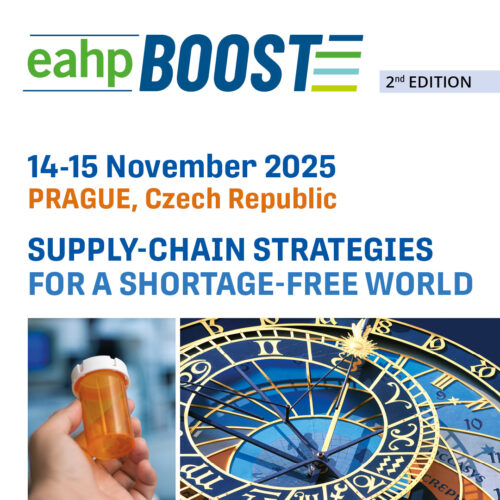IDENTIFICATION OF HAZARDOUS DRUGS IN EMERGENCY DEPARTMENT: DRUGS CABINET INSPECTION (submitted in 2019)
Pdf

European Statement
Patient Safety and Quality Assurance
Author(s)
Mª Antonia Meroño-Saura, María López-Morte, Taida Rodríguez-Martínez, Pilar Pacheco-López, Consuelo García-Motos
Why was it done?
The publication of the NIOSH list and its application by INSHT in Spain has changed the concept of “Hazardous drug” in terms of its handling and administration, as well as personnel training involved in its management.
What was done?
The main objective is to label every drug considered “Hazardous” and to review the medication included in the Emergency Department kit in a tertiary hospital.
How was it done?
Literature about Hazardous drugs was reviewed. All the drugs included in the Emergency Department kit belonging were identified and classified according to their level published in the NIOSH list. A kit’s review was carried out on site, as well as a Hazardous drugs’ categorisation by adequate labels.
What has been achieved?
6 out of 239 drugs included in the emergency kit were labelled as Hazardous drugs, and could be found in 9 different presentations. Regarding its risk level according to the NIOSH list; chloramphenicol, risperidone and all different presentations of phenytoin were classified as level 2. Acenocoumarol, colchicine/dicycloverine and all different presentations of valproic acid were classified as level 3.
The following incidents were detected;
– Lack of identification: 8 out of the total number of drugs presented identification errors.
– Location error: 4 out of the total number of drugs were not well located.
– Photosensitive: 56 out of the total drugs were photosensitive, of which 11 were not correctly identified or stored.
– Expired drugs: 12 drugs, whose total stock was 399 units. 51 out of the total amount were expired.
After this review, the following measures were carried out:
– Orange labelling for Hazardous drugs’ identification, regardless of their risk level.
– Misidentified drugs were re-labelled, and those that were misplaced were placed in their assigned spot.
– Photosensitive drugs were correctly identified by blue labels and properly preserved.
– Expired drugs were withdrawn.
What next?
Simplifying Hazardous drugs’ identification by a categorisation following a colour code could lead to a safer manipulation by the professionals. During the review of the kit, several incidents were detected and sorted out, which avoided possible medication-related errors. Therefore, it is necessary to establish several control measures in emergency kits in order to avoid errors and improve the safety in the use of drugs.
HOW TO HANDLE ACTIVE AND PLACEBO DRUGS FOR A CLINICAL TRIAL IN THE PRODUCTION SYSTEM CATO IN ORDER TO SECURE THE BLIND AND TO ENSURE THE EXACT SAME PREPARATION OF ACTIVE AND PLACEBO PRODUCTS
Pdf

European Statement
Production and Compounding
Author(s)
Kirsten Lykke Vorbeck
Why was it done?
When preparing treatments for blinded clinical trials it is very important to make sure that it is not possible to distinguish between the active and the placebo dose, as this may lead to unblinding of the treatment and thus jeopardise the results of the trial.
What was done?
The purpose was to find solutions for how to handle active and placebo drugs in the production system CATO to ensure they would end up being identical when prepared.
How was it done?
Before preparing a drug using CATO the drug must be registered in the system with all of its data. It is not possible to have two different sets of data for one drug. CATO records detailed documentation of what is being done during preparation and it is not possible to pretend to pick one drug and then grab another instead. Also, the label is printed automatically so it will show exactly what was prepared. We decide on a common name for the active/placebo and register both of these in the system under that name so that they will be prepared in exactly the same way and appear identical on the label but are still distinguishable in the batch documentation. We name the drug ‘Protocol name Active substance/placebo’ and register the stock of both active drug and the sodium chloride solution that is used as placebo under that name. We will also stock vials of NaCl for this purpose next to the drug it is being placebo for, and NaCl can be prepared pretending it has the density of the drug. CATO will think they are the same drug but they have been registered with their very different batch numbers, maybe with a NaCl after the number of that, so it is always possible to see what was actually being prepared.
What has been achieved?
Our doses of active and placebo are indistinguishable. Labels are the same and, for example, withdrawal into a syringe and insertion of a needle into the port of the infusion bag will be done in the same way.
What next?
These very simple routines can be used anywhere for the preparation with CATO and possibly also with other systems.























